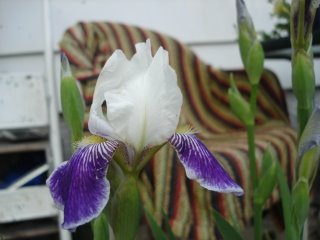
 I visited a local natural area this past weekend, where yellow slippers grow like weeds. I got 163 pics of them; these are a couple of the better ones. There were parviflorum and pubescens varieties; these are both pubescens. They grew anywhere from 8" to 16" tall with 3-4" flowers and the tepals were either light yellow-green, reddish, or rarely maroon. Out of the thousands I saw only 3 were maroon like the one pictured here. This huge flower was on a single-stemmed plant that peeked out of the grass. The big clump pictured is the typical form but the biggest one I saw, with 36 flowering stems. Most had around 5-8. It takes a plant 8-16 years to flower from seed, and they slowly spread after that. The parviflorums were 3-8" tall, mostly growing in grass and very easy to step on. Amazing! I also hunted for C. passerinum in this area; I couldn't find the other trail where it is alleged to grow. Better luck next year.
I visited a local natural area this past weekend, where yellow slippers grow like weeds. I got 163 pics of them; these are a couple of the better ones. There were parviflorum and pubescens varieties; these are both pubescens. They grew anywhere from 8" to 16" tall with 3-4" flowers and the tepals were either light yellow-green, reddish, or rarely maroon. Out of the thousands I saw only 3 were maroon like the one pictured here. This huge flower was on a single-stemmed plant that peeked out of the grass. The big clump pictured is the typical form but the biggest one I saw, with 36 flowering stems. Most had around 5-8. It takes a plant 8-16 years to flower from seed, and they slowly spread after that. The parviflorums were 3-8" tall, mostly growing in grass and very easy to step on. Amazing! I also hunted for C. passerinum in this area; I couldn't find the other trail where it is alleged to grow. Better luck next year.









